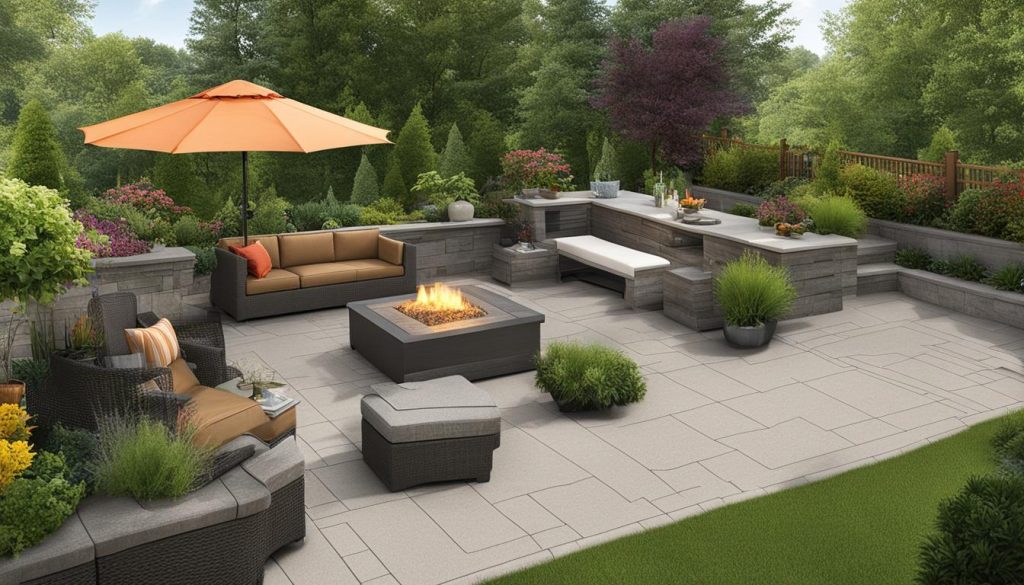Welcome to our guide on landscape design planning for the Canadian outdoors! Here, we’ll show you how to create a beautiful and functional outdoor space that fits your lifestyle. Whether you’re starting from scratch or renovating an existing landscape, our step-by-step process will help you develop your vision and bring it to life.
Before we dive into the details, we want to emphasize the importance of planning when it comes to designing your landscape. A well-planned design will not only save you time and money in the long run but also ensure that your outdoor space meets your needs and goals.
Our guide will cover everything from assessing your outdoor space and creating a conceptual design to choosing the right plants and materials, designing for functionality and accessibility, implementing your design, and enhancing your landscape over time. Let’s get started!
Assessing Your Outdoor Space
Before diving into the design phase, we need to assess your current outdoor space. This step will help us evaluate your landscape and identify any challenges or opportunities that may affect your design decisions. Let’s start by evaluating the overall condition of your outdoor area.
Landscaping Assessment
When assessing your outdoor space, consider the following:
- The overall size and shape of the area
- The existing features, such as trees, shrubs, and other plants
- The quality of the soil and drainage
- The amount of sunlight and shade throughout the day
- The existing hardscape elements, such as patios, walkways, and retaining walls
This evaluation will help us determine the type of landscape design that will work best for your outdoor space.
Outdoor Space Evaluation
Next, let’s consider your goals for your outdoor space. What do you want to achieve with your landscape project? Are you looking to create a space for outdoor entertaining, relaxation, or recreational activities? Do you have any special requirements, such as accessibility for people of all abilities?
Identifying your landscape design goals will help us create a customized plan tailored to your specific needs and preferences.
Landscape Design Goals
When identifying your landscape design goals, consider the following:
- Your personal aesthetic preferences
- Your lifestyle and habits, such as how much time you spend outdoors
- The climate and weather in your area
- Your budget for the project
- Your timeline for completion
Considering these factors will help us design a landscape that not only looks beautiful but also functions well with your lifestyle and budget.
Now that we have assessed your outdoor space and identified your landscape design goals, it’s time to move on to the next step: creating a conceptual design.
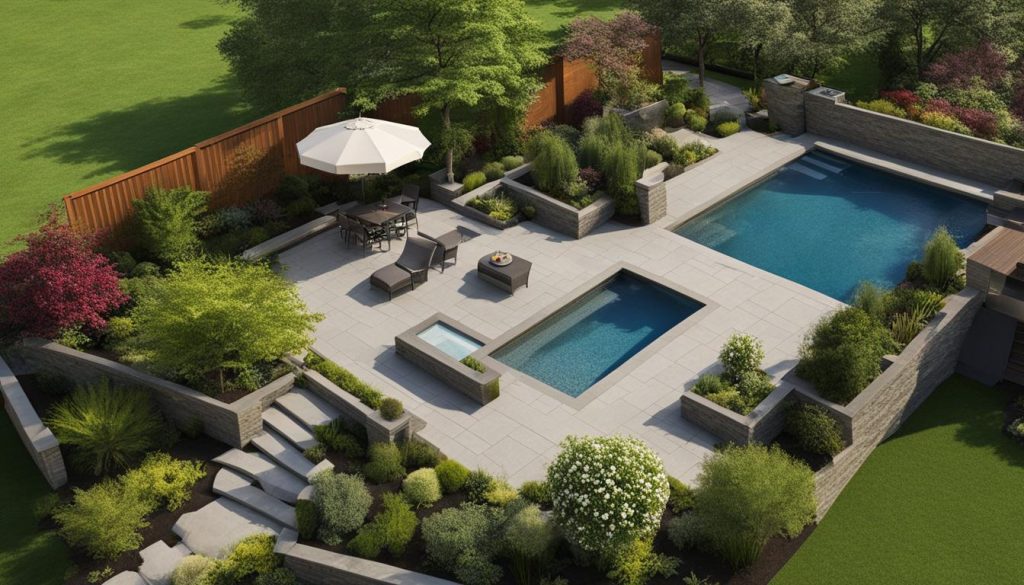
Creating a Conceptual Design
Now that you have assessed your outdoor space, it’s time to create a conceptual design. This is where we get to explore different design elements to bring your outdoor aesthetic to life.
The first step in creating a landscape design concept is to determine your design goals. What kind of outdoor space do you want to create? Do you envision a cozy retreat to relax in, or a vibrant space for entertaining guests? Once you have a clear idea of your goals, you can begin to select design elements that will bring your vision to life.
Design Elements
- Plants: The right selection of plants can transform your landscape design concept. Consider factors such as size, color, and texture when choosing plants. You can use foliage to create a sense of privacy or to add dimension to your design, while flowers can provide bursts of color and fragrance.
- Hardscape Features: Hardscape features like walkways, patios, and retaining walls can add both beauty and functionality to your outdoor space. Consider the materials you want to use and how they will fit into your overall design concept.
- Lighting: Don’t forget about lighting! It can add a whole new dimension to your landscape design, creating ambiance and highlighting key features of your outdoor space.
- Color Palette: Choose a color palette that complements your home and surrounding environment. You can play with different shades and hues to create a cohesive look throughout your outdoor space.
Remember to keep your design concept in line with your overall vision and goals. It’s important to strike a balance between style and functionality to create a truly impressive outdoor space.
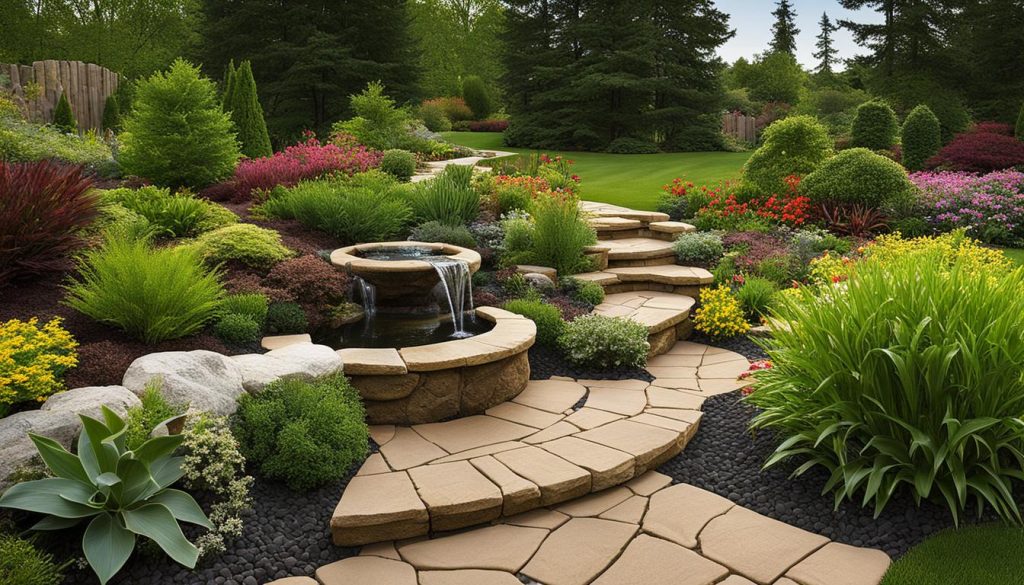
Up next, we’ll dive into selecting the right plants and materials to bring your landscape design concept to life!
Choosing the Right Plants and Materials
As we discussed in the earlier sections, plant selection and material choices play a crucial role in the success of your landscape project. Not only should you choose plants that are visually appealing, but they should also thrive in the Canadian climate.
Native plants are an excellent choice for your landscape project as they are adapted to survive the harsh winter months and the warm summer days. You can choose from a variety of trees, shrubs, and ornamental grasses that will provide color and texture to your outdoor space throughout the year.
When it comes to selecting materials for your hardscape elements, you want to choose materials that are durable, sustainable, and functional. Materials such as interlocking stone, natural stone, and concrete pavers are popular choices for walkways, patios, and retaining walls. These materials offer a variety of color and texture options while also being low maintenance and long-lasting.
Plant Selection
- Choose native plants that are adapted to the Canadian climate
- Select plants that will provide color and texture throughout the year
- Consider the size and growth habit of plants when designing your landscape
- Choose plants that are suitable for your soil type and sun exposure
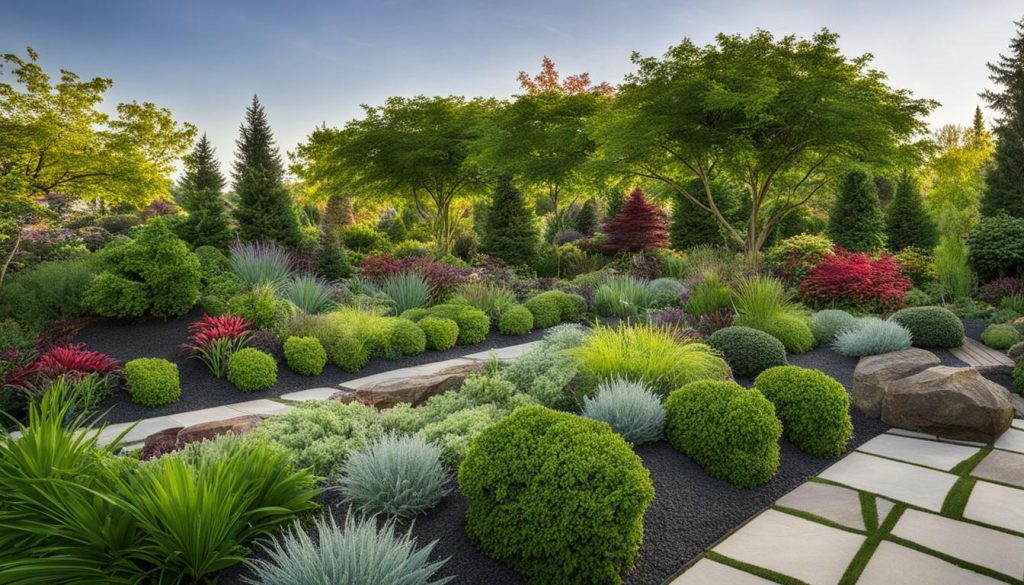
Material Choices
- Choose materials that are durable and sustainable
- Select materials that offer a variety of colors and textures
- Consider materials that are low maintenance and long-lasting
- Ensure that materials are suitable for your climate and outdoor space needs
By choosing the right plants and materials, you can ensure that your landscape project is not only visually appealing but also functional and long-lasting.
Designing for Functionality and Accessibility
When it comes to creating a landscape design, functionality and accessibility are key considerations. Your outdoor living areas should be designed to meet your needs and lifestyle, while also being accessible to everyone, regardless of their abilities.
Creating Outdoor Living Areas
Functionality should be at the forefront of your landscape design, especially when it comes to creating outdoor living areas. Think about the activities you and your family enjoy, such as dining, lounging, and entertaining, and design your outdoor space accordingly. Consider factors such as seating areas, storage, and cooking facilities to create a functional and comfortable space.
In addition to functionality, accessibility is also important. Whether you or someone in your family has mobility limitations, or you simply want your outdoor space to be accessible to everyone, there are several design strategies to consider. For example, wider pathways, fewer steps, and ramps can make your outdoor space more accessible.
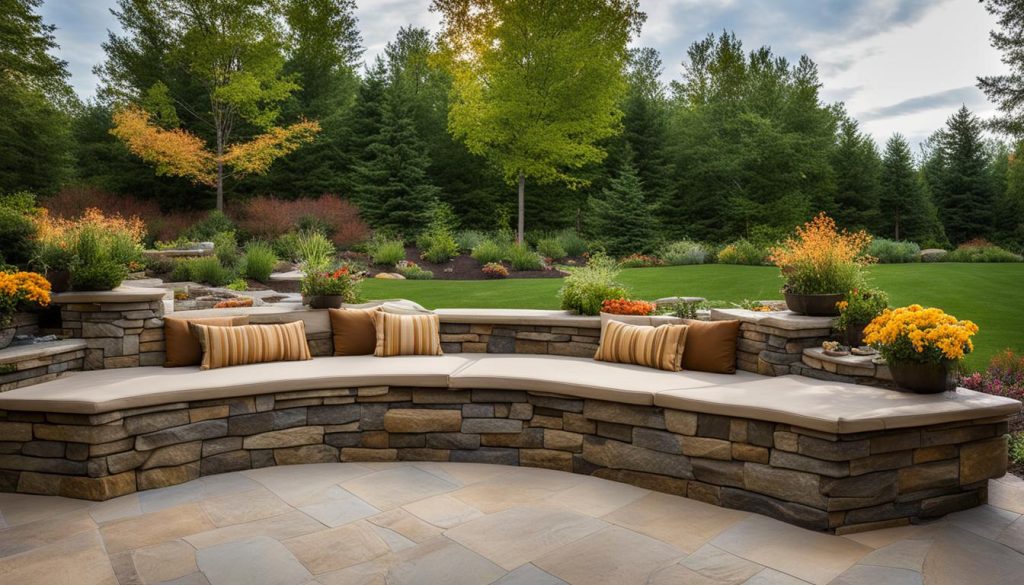
Designing with Accessibility in Mind
When designing your landscape, think about how the space can be adapted to accommodate different abilities and mobility needs. For example, raised planters and containers can be used to make gardening more accessible for those who have difficulty bending or kneeling. Outdoor lighting can help improve visibility and safety, especially for those with low vision.
Adding handrails to steps and ramps can help those with mobility limitations navigate your outdoor space. If you have a pool, consider installing a pool lift to make swimming accessible to everyone. Additionally, adding sensory elements like fragrant plants and water features can enhance the outdoor experience for individuals with sensory impairments.
Final Thoughts
Designing for functionality and accessibility is key to creating a landscape that can be enjoyed by everyone. By incorporating these elements into your design, you can create an outdoor space that is not only beautiful but also functional, comfortable, and accessible for everyone.
Implementing Your Landscape Design
Implementing a landscape design can be an exciting and rewarding process. Whether you choose to hire professionals or take the DIY route, there are several important factors to consider.
Site Preparation
Before any installation can begin, it’s essential to prepare the site properly. This may involve clearing existing vegetation, grading the terrain, and installing drainage systems. Depending on the scope of the project, you may need to obtain permits or adhere to local bylaws.
It’s also important to consider any utility lines or underground pipes that may be present on your property. Be sure to consult with professionals to avoid any damage or disruption during the installation process.
Hiring Professionals
Hiring landscape design professionals to install your landscape can alleviate stress and provide peace of mind. Professionals have the necessary experience, knowledge, and equipment to ensure a successful installation. They can also provide guidance on plant selection and ongoing maintenance.
When choosing a professional, be sure to research and compare quotes from different companies. Look for recommendations and reviews, and ensure they are licensed, insured, and bonded.
Remember, a professional installation may come at a higher cost, but it can save you time, effort, and potential mistakes in the long run.
DIY Landscaping
On the other hand, if you have the time and skills, you may choose to tackle the installation yourself. DIY landscaping can be a fun and rewarding experience, but it’s important to be realistic about your abilities.
Start by researching the necessary tools, materials, and techniques. Attend workshops or consult with professionals to learn about best practices and possible pitfalls to avoid.
Be sure to have a clear plan and timeline in place, and don’t hesitate to ask for help from friends or family when needed. Remember to prioritize safety and adhere to local regulations and bylaws.
Whether you choose to hire professionals or go the DIY route, always ensure that your landscape installation is aligned with your conceptual design and long-term goals.
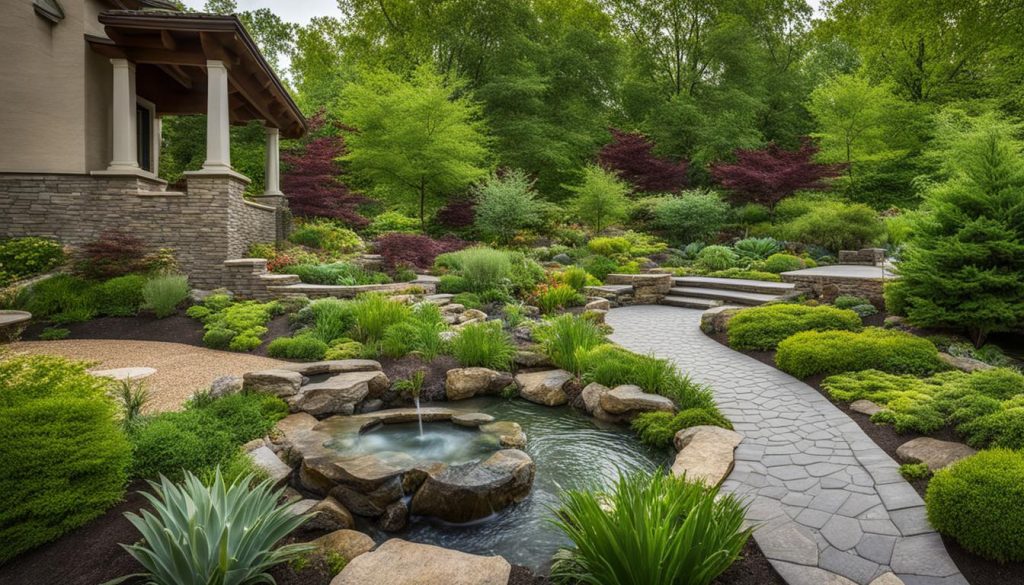
In conclusion, implementing your landscape design can be a fun and exciting process with the right approach. Take the time to properly prepare the site, consider professional assistance, and plan accordingly for a successful installation. With some effort and dedication, you’ll soon be able to enjoy your dream outdoor space.
Enhancing Your Landscape Over Time
Now that your landscape project is complete, it’s important to maintain and make ongoing improvements to ensure its beauty and functionality. Regular maintenance is key to keeping your outdoor area looking great and preventing any potential issues from arising.
Maintenance Tips
We recommend creating a maintenance schedule to keep track of tasks such as watering, fertilizing, and pruning. Regularly mowing the lawn, removing weeds, and deadheading flowers will also keep your landscape looking neat and healthy.
Don’t forget to inspect your hardscape features such as walkways and retaining walls for cracks or damage. Addressing these issues promptly will prevent them from worsening and potentially becoming safety hazards.
Cleanliness is also important for the longevity of your landscape. Regularly remove debris such as fallen leaves, branches, and other clutter that can gather on your lawn or pathways. Keep your outdoor areas free from litter, and use a pressure washer to clean outdoor furniture and hardscapes as needed.
Seasonal Adjustments
As the seasons change, your landscape will have different needs. In the spring, it’s a good time to plant new flowers and shrubs, as well as assess any winter damage that may have occurred. Summer typically requires more frequent watering and mowing, while fall is an ideal time for cleaning up fallen leaves and preparing your landscape for winter.
Winter brings its own set of challenges, such as protecting your plants from frost damage and keeping walkways clear of ice and snow. You may want to consider planting evergreen trees or shrubs to add some greenery to your winter landscape.
Making Improvements
As your landscape matures, you may want to make changes or additions to enhance its beauty and functionality. Perhaps you want to add a new outdoor living area, such as a fire pit or patio. Or, you may want to switch up your plant selections to add more color or texture to your landscape.
When making improvements, consider the long-term impact on your landscape. Choose sustainable materials and native plants that are well-suited to the Canadian climate. You may also want to consult with a landscaping professional to ensure your changes are well-planned and executed properly.
By following these maintenance tips and making seasonal adjustments, you can ensure your landscape remains beautiful and functional for years to come. Don’t be afraid to make improvements as your outdoor space evolves and matures.
FAQ
How do I start planning and designing my landscape project?
To begin planning and designing your landscape project, assess your outdoor space, determine your goals, and create a conceptual design. Consider factors such as plant and material choices, functionality, accessibility, and implementation options.
What should I consider when assessing my outdoor space?
When assessing your outdoor space, take into account its current condition, size, and any existing features or challenges. Determine what you like and dislike about it and consider how you want to use the space. Identify any opportunities or limitations that may impact your design decisions.
How do I create a conceptual design for my landscape project?
Creating a conceptual design involves considering various design elements such as hardscape features, plant selections, and color schemes. Think about the overall aesthetic you want to achieve and how it aligns with your goals. Use sketches or design software to visualize your ideas and make adjustments as needed.
What factors should I consider when choosing plants and materials?
When choosing plants, consider native species that thrive in the Canadian climate and suit your design goals. For materials, prioritize durability and sustainability, especially for hardscape elements like walkways and patios. Research and consult with experts to ensure your selections are suitable for your specific outdoor conditions.
How can I design my landscape to be functional and accessible?
Designing for functionality and accessibility involves considering seating areas, pathways, lighting, and accessibility for people of all abilities. Create outdoor living areas that cater to your needs and lifestyle, ensuring ease of movement and usability for everyone who will be using the space.
Should I hire professionals or do the landscaping myself?
Whether to hire professionals or do the landscaping yourself depends on your budget, time constraints, and comfort level. If you have limited experience or a complex design, hiring professionals can ensure a high-quality result. However, if you enjoy DIY projects and have the time and skills, you can save money by tackling the project yourself.
How do I maintain and improve my landscape over time?
Regular maintenance is important to keep your landscape looking its best. This includes tasks such as watering, fertilizing, pruning, and addressing common issues like weed control. As your outdoor space evolves, make seasonal adjustments, consider ongoing improvements, and seek professional advice when needed to enhance the beauty and functionality of your landscape.

